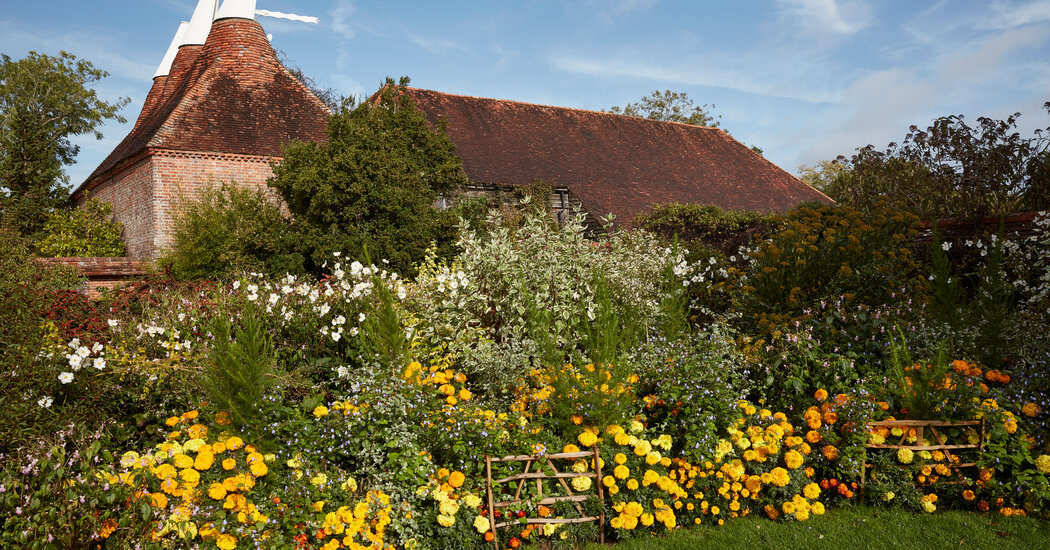
The woodworkers gather in a thatched 15th-century barn and wield hand tools to produce ladders, garden benches and hurdles, which are barriers strewn around the garden to keep out badgers and other pests. Great Dixter has its own nursery, meadows, woodland and farmland, and composts its waste in towering stacks, later sterilized in-house to prevent weed growth. Visiting scientists conduct biodiversity audits and have counseled Mr. Garrett not to clear away some decaying tree stumps because they serve as nesting grounds for the rare solitary bee.
The camaraderie was infectious, and we students often ended our long days with late-night talks over drinks, where we hashed over what we’d learned, swapped pictures of gardens as others do of children, and began plotting how to tear up and reimagine our own plantings. Then we collapsed into bed to rise early enough to savor the full English breakfast and embark on the next topic.
There was staking: Garrett demonstrated the proper way to stake plants for support, essential in a public garden like Dixter that is always on display and extremely useful in environments like mine, buffeted by heavy wind. We practiced clove hitches to connect bamboo stakes and learned to position them under leaves and behind stems, the better to hide them.
There was soil analysis: Consulting our multipage handouts, we watched as Mr. Garrett mixed Dixter soil with additions like bark, grit and organic matter to maximize drainage and spur growth. We followed along as he decoded the amounts of nitrogen, phosphorus and potassium optimal for which plants.
Those in the group with land to spare wanted to create meadows scattered with wildflowers. So Mr. Garrett and a senior gardener, Graham Hodgson, explained the need to first blanket them with hay or black plastic for two years to kill weeds, then put off mowing long enough so that the flower seed heads spill into the earth. It was mowing season, and the gardeners were cutting the flowers and grass “down to the knuckle,” as Mr. Garrett put it, to allow new growth.
On our last day, our knowledge was put to the test. Garrett divided us into two teams to design borders in a full sun environment. We nominated and eliminated plants to serve as the anchors and the under-layers, sorting through which needed sun, the length of their growing seasons, how many we needed in each segment, and whether our design provided enough contrast in height, foliage and color.
Mr. Garrett approved our attention to contrast and seasonality, but noted that both group’s borders were over-packed with plants and did not deploy enough movement or strategic use of color or shape to pull the eye through them. Then it was off to a friendly pub for a farewell dinner, where many from Great Dixter’s staff joined us for a laden table of roast beef, roast lamb, chicken with dressing, Yorkshire pudding and enormous portions of sticky toffee pudding, apple crumble or ice cream.



